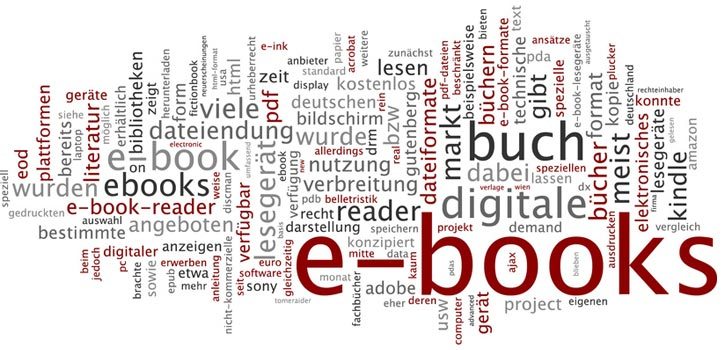-
Short CommunicationView abstract
 PDF
PDF
 Full text
Global warming, caused by the increase in greenhouse gas emissions, is not only affecting the natural environment but also causing severe impacts on our built and cultural heritage [1]. The rising temperatures, sea-level rise, and extreme weather events like floods, hurricanes, and droughts are damaging buildings and archaeological sites worldwide [2,3]. The increase in greenhouse gas emissions from human activities such as burning fossil fuels, deforestation, and industrial processes is the primary cause of global warming. The resulting climate change is causing severe impacts on our natural environment, including rising temperatures, melting glaciers, sea-level rise [3], and more frequent and intense weather events [4]. However, global warming is not just affecting the natural environment; it is also causing severe impacts o..... ReadMore
Full text
Global warming, caused by the increase in greenhouse gas emissions, is not only affecting the natural environment but also causing severe impacts on our built and cultural heritage [1]. The rising temperatures, sea-level rise, and extreme weather events like floods, hurricanes, and droughts are damaging buildings and archaeological sites worldwide [2,3]. The increase in greenhouse gas emissions from human activities such as burning fossil fuels, deforestation, and industrial processes is the primary cause of global warming. The resulting climate change is causing severe impacts on our natural environment, including rising temperatures, melting glaciers, sea-level rise [3], and more frequent and intense weather events [4]. However, global warming is not just affecting the natural environment; it is also causing severe impacts o..... ReadMore -
Research ArticleView abstract
 PDF
PDF
 Full text
Information that sheds light on history is undoubtedly written sources. Approximately 23 thousand clay tablets were found in Kaniş Karum and its surroundings. There is commercial treaty information between Assyrian colonies with colonies of the Hatti country in the vast majority of these tablets. In the light of the information in the correspondence made with tablets at that time was investigated how the mines are processed, what kind of work is done and how the objects are produced...... ReadMore
Full text
Information that sheds light on history is undoubtedly written sources. Approximately 23 thousand clay tablets were found in Kaniş Karum and its surroundings. There is commercial treaty information between Assyrian colonies with colonies of the Hatti country in the vast majority of these tablets. In the light of the information in the correspondence made with tablets at that time was investigated how the mines are processed, what kind of work is done and how the objects are produced...... ReadMore -
Short CommunicationView abstract
 PDF
PDF
 Full text
One of the most singular stories in the Bible is the feat of Samson, who “went out and caught three hundred foxes and tied them tail to tail in pairs. He then fastened a torch to every pair of tails, lit the torches and let the foxes loose in the standing grain of the Philistines. He burned up the shocks and standing grain, together with the vineyards and olive groves” [1]...... ReadMore
Full text
One of the most singular stories in the Bible is the feat of Samson, who “went out and caught three hundred foxes and tied them tail to tail in pairs. He then fastened a torch to every pair of tails, lit the torches and let the foxes loose in the standing grain of the Philistines. He burned up the shocks and standing grain, together with the vineyards and olive groves” [1]...... ReadMore -
Review ArticleView abstract
 PDF
PDF
 Full text
Darwinian evolution theory, Darwinism, states that species evolve from simple to complex [1]. In Darwinism, species can change over time, new species come from pre-existing species, and all species share a common ancestor. Organisms with the best-suited characteristics for their environment are more likely to survive and reproduce. Thus, humans evolved from primate animals according to this evolution theory. There are many paradoxes associate with Darwinism...... ReadMore
Full text
Darwinian evolution theory, Darwinism, states that species evolve from simple to complex [1]. In Darwinism, species can change over time, new species come from pre-existing species, and all species share a common ancestor. Organisms with the best-suited characteristics for their environment are more likely to survive and reproduce. Thus, humans evolved from primate animals according to this evolution theory. There are many paradoxes associate with Darwinism...... ReadMore -
Review ArticleView abstract
 PDF
PDF
 Full text
Bigger than Zurich, but smaller than Vienna, Liechtenstein is the sixth smallest country in the world, being overcome in smallness just by the Vatican, Monaco, Nauru, Tuvalu, and San Marino. Liechtenstein is framed by the Alps and shares its doubly landlocked 62 sq. mi borders with only two other countries: Switzerland and Austria...... ReadMore
Full text
Bigger than Zurich, but smaller than Vienna, Liechtenstein is the sixth smallest country in the world, being overcome in smallness just by the Vatican, Monaco, Nauru, Tuvalu, and San Marino. Liechtenstein is framed by the Alps and shares its doubly landlocked 62 sq. mi borders with only two other countries: Switzerland and Austria...... ReadMore -
Short CommunicationView abstract
 PDF
PDF
 Full text
In 2015, Cluj-Napoca (Romania) was the European Youth Capital. In 2015, supported by the Mayor’s Office, banks, and other contributors, the Common Cluj initiative was established as the major project involving young people in the city. In 2016, this continued with a different budget, launching a competition aimed at organizing and implementing events and programs for children and young people...... ReadMore
Full text
In 2015, Cluj-Napoca (Romania) was the European Youth Capital. In 2015, supported by the Mayor’s Office, banks, and other contributors, the Common Cluj initiative was established as the major project involving young people in the city. In 2016, this continued with a different budget, launching a competition aimed at organizing and implementing events and programs for children and young people...... ReadMore -
OpinionView abstract
 PDF
PDF
 Full text
Global and local water situational trends are presented to project the corresponding water sustainability. In this sense, public policies are essential to establish the costs of water supply. However, citizen, community and neighborhood participation is also essential in establishing unit water prices (Abramo, 2012) [1]...... ReadMore
Full text
Global and local water situational trends are presented to project the corresponding water sustainability. In this sense, public policies are essential to establish the costs of water supply. However, citizen, community and neighborhood participation is also essential in establishing unit water prices (Abramo, 2012) [1]...... ReadMore -
OpinionView abstract
 PDF
PDF
 Full text
The town of ancient Lefkas due to its strategic location off the western coast of mainland Greece became a powerful fortified city with houses arranged according to the Hippodamian grid plan, an agora, a huge theatre and a busy port [1-5]. The city retained two outside the city walls (Figure 1), the South cemetery, located at the “Kariotes” area, and the North cemetery, found north of the Kalligoni village, and scattered in two main clusters. Several rescue excavations in the two cemeteries have brought to light hundreds of tombs, dating from the archaic to the roman period [2, 6-7]...... ReadMore
Full text
The town of ancient Lefkas due to its strategic location off the western coast of mainland Greece became a powerful fortified city with houses arranged according to the Hippodamian grid plan, an agora, a huge theatre and a busy port [1-5]. The city retained two outside the city walls (Figure 1), the South cemetery, located at the “Kariotes” area, and the North cemetery, found north of the Kalligoni village, and scattered in two main clusters. Several rescue excavations in the two cemeteries have brought to light hundreds of tombs, dating from the archaic to the roman period [2, 6-7]...... ReadMore
Lupine Publishers Group
Lupine Publishers
ISSN: 2690-5752
Journal of Anthropological and Archaeological Sciences
Journal of Anthropological and Archaeological Sciences is an open access journal welcomes all archaeologists and scientists from different scientific backgrounds. This journal covers all areas of archaeology and anthropology including geoarchaeology, geochronology, Sociocultural anthropology, Philosophical Anthropology, archaeozoology, genetics, material analysis and conservation science. JAAS journal helps to learn the basic scientific principles and how scientific methodology can be used to analyze real world problems, including societal issues that can be informed by studies of past cultures. This journal helps to cultivate an informed awareness of the peoples, cultures, languages, and nations of the world, gaining a greater understanding and appreciation of the varieties of human experience across time and space and a basic understanding of evolutionary concepts in general, and human evolution specifically. This journal welcomes all the Original Research Papers, Mini Reviews, Review Articles, Opinions, Editorials, etc. in all major fields of the anthropological and archaeological sciences.



















.png)
.jpg)

